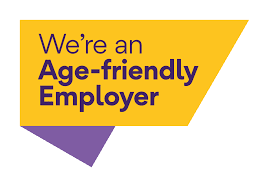HR Roundtable 9 – Let’s talk about Bullying RECAP
At last month’s HR Roundtable, we were delighted that Lauren Seager-Smith, the CEO of Kidscape, joined us to discuss the topic of workplace bullying. Ian Joseph, one of Russam’s MDs, sits as the chair of the Kidscape board and was thrilled with Lauren’s involvement in this HR Round table as she is an expert in this subject matter.
The topic is close to our hearts as we are aware of the detrimental impact of workplace bullying on an individual. It affects your self-esteem. It creates anxiety. It can manifest in physical conditions, skin conditions, stomach or heart. And it spills over into your family life and your ability to be productive as a human being. And so, in so many ways, bullying is a terrible, terrible affliction.
Interest figures about workplace bullying:
Around a third of people have been bullied sometime at work. The highest prevalence amongst 40- to 59-year-olds. Interestingly, it looks like slightly more women have been victims of bullying than men. This has played out in research done recently in the charity sector. A manager carries out the majority of cases of bullying.
In a more recent study of 2000 UK employees, a quarter felt left out in the workplace, 12% admitted they struggled to make friends, and 23% had been bullied.
The Effect of Culture on workplace bullying:
The company culture is one of the most significant determining factors of whether workplace bullying occurs, is dealt with, or, even better, is prevented. Some research suggests that the UK and the USA have high levels of bullying because we’re individualistic culturally rather than collective cultures. Marc Benioff of Salesforce described a company’s Culture as a never-ending journey without a destination. With this in mind, how would your clients and employees describe your company’s Culture? Can you confidentially say their opinion is aligned with yours?
Question to ask about Culture:
- Is honest communication encouraged?
- Are there blurred lines around behaviour?
- Are you confident that your staff and clients feel safe
- What does respectful mean in action?
- How do people talk to one another in emails?
- How much support do you put in place for managing conflict?
- Do you promote and protect personal boundaries?
- How much are you thinking about that and managing that prevention?
- Do you give staff training in bullying and harassment?
- Do you provide inclusion and diversity training?
- Do you have a framework for sharing concerns?
- Do you provide management training?
- Are there clear reporting mechanisms?
- Are you a learning culture?
Summary
As mentioned before, managers are more likely to be the perpetrators of workplace bullying – many never receive leadership training once they get into positions. Training can better equip less experienced managers- so that they become aware of what good management and leadership looks like. It is possible that they perceptive aggression as assertiveness. If you want to learn more about the topic – check out Kidscape’s workplace bullying training.
https://www.kidscape.org.uk/training/training-for-the-workplace/help-with-bullying-in-the-workplace/

Contact us
Call us on 07930 356305 or email HQ@russam.co.uk








